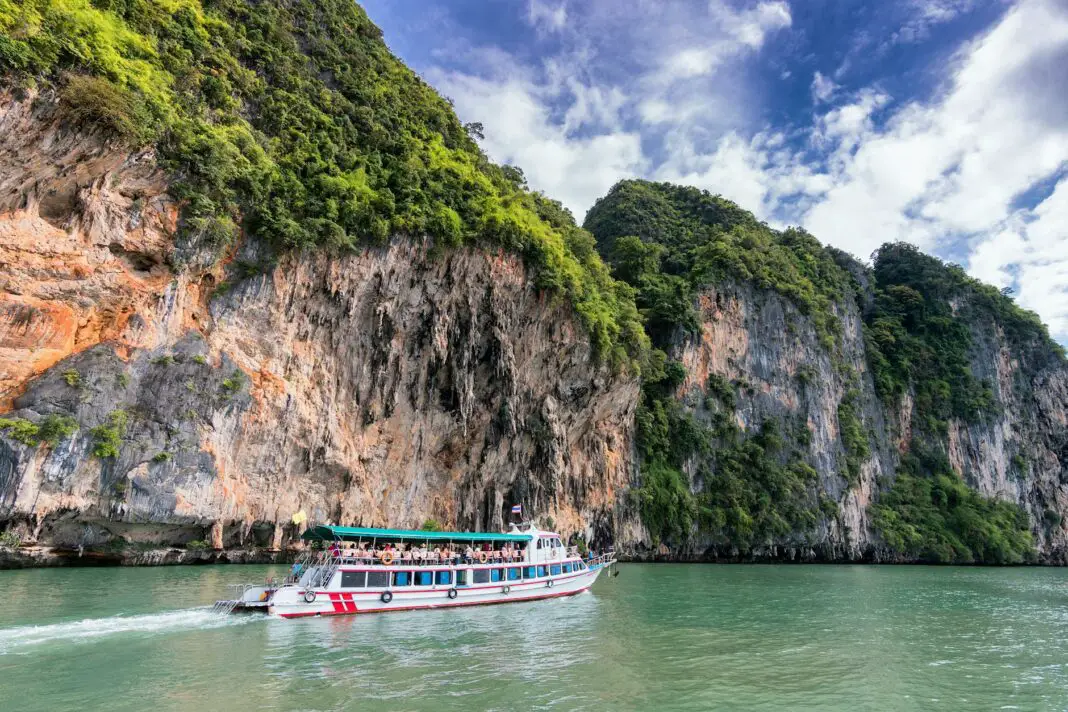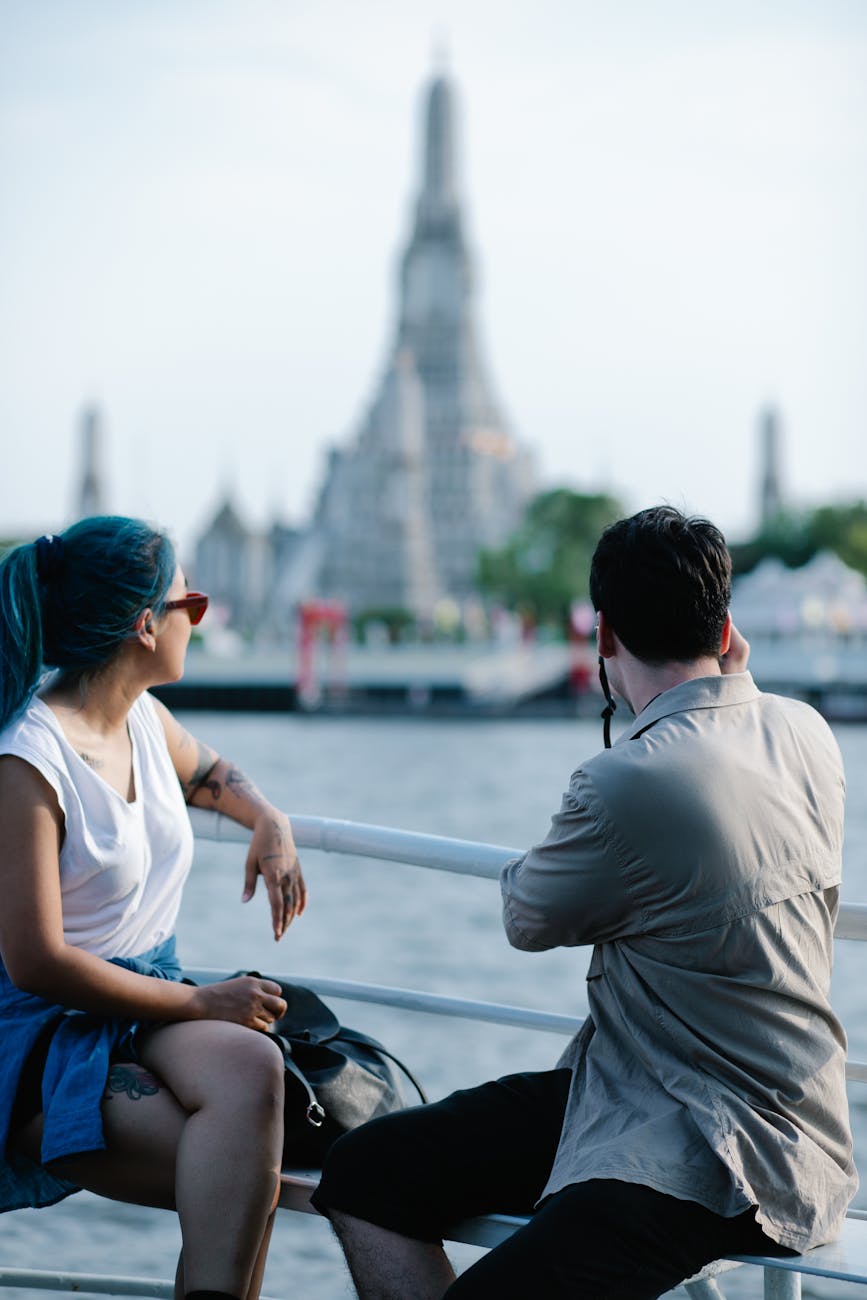Planning a trip to Thailand is not just about visiting breathtaking beaches or indulging in vibrant street food. It’s a journey into a land steeped in rich history and culture, where every corner is an invitation to explore. Among the fascinating elements of Thailand’s history is the legacy of its influential dynasties that helped shape the country into what it is today. In this blog post, we will unravel the story behind the dynasty that left the most significant mark on Thailand and how this impacts your travel experience. Get ready for an adventure that combines historical insights with travel tips for an unforgettable exploration.
Fasten your seatbelts as we dive into a detailed discussion about Thailand’s dynasties, the lasting impacts of the most influential one, and actionable insights that will elevate your journey. By the end of this post, you will not only understand the rich historical tapestry of Thailand but also find yourself equipped with practical tips that can enhance your visit. Let’s embark on this journey together!
Table of Contents
- The Influential Dynasties in Thailand
- The Sukhothai Dynasty
- The Ayutthaya Dynasty
- The Modern Times Dynasty
- The Impact of the Chakri Dynasty
- Travel Tips for Exploring Historical Sites
- Unearthing Thailand’s Rich History
- The Lasting Legacy of the Chakri Dynasty
The Influential Dynasties in Thailand
Throughout its history, Thailand has been shaped by multiple prominent dynasties, each contributing to the nation’s unique tapestry. These dynasties have not only impacted political structures but also influenced art, architecture, and culture across the land. One such dynasty, often viewed through the lens of greatness, is the Chakri Dynasty. Established in the late 18th century, it has played a crucial role in modernizing Thailand and promoting its cultural identity on the global stage. Understanding these eras allows travelers to appreciate the deep-rooted traditions and innovations that are apparent in modern-day Thailand.
Additionally, the Sukhothai and Ayutthaya dynasties also hold immense significance. The Sukhothai era marked the flowering of Thai civilization, developing language, religion, and agriculture. Meanwhile, the Ayutthaya period catalyzed trade, diplomacy, and cultural exchanges with foreign powers, further molding Thailand’s character. Each of these dynasties leaves an indelible mark that continues to resonate today, offering travelers a glimpse into the intricate history that defines Thailand.
The Sukhothai Dynasty
The Sukhothai Dynasty, often considered the birthplace of Thai culture, reigned during the 13th to 14th centuries and is celebrated for its pivotal contributions. This era saw the creation of the Thai script, a significant achievement that enhanced communication and cultural expression. Buddhist beliefs flourished, and the renowned Sukhothai Historical Park now stands as a testament to this dynasty’s architectural and artistic prowess. The park is home to majestic ruins featuring stupas and statues, providing a captivating insight into Thailand’s early days.
When visiting, allow yourself to immerse in the serene atmosphere. Renting a bicycle enhances the experience as you discover tranquil temples and lush landscapes. Each temple narrates tales of the past, presenting an opportunity to reflect on how this dynasty laid the foundations of Thai society. Don’t forget to taste authentic dishes from the local markets nearby, giving you a sense of the enduring culinary traditions that emerged during this time.
The Ayutthaya Dynasty
Lasting from the 14th to the 18th centuries, the Ayutthaya Dynasty is another monumental chapter in Thailand’s history. Positioned as a strategic trading hub, Ayutthaya attracted merchants from around the globe, facilitating cultural exchanges and economic growth. The dynasty’s grandeur is epitomized in its stunning ruins, and today, the Ayutthaya Historical Park is a UNESCO World Heritage Site that reminds visitors of its past splendor. The architecture features a mix of influences, illustrating the cosmopolitan nature of the dynasty.
While exploring Ayutthaya, consider taking a guided boat tour, which provides a unique perspective on the ancient city. Make sure to capture the iconic Wat Phra Si Sanphet and Wat Chaiwatthanaram, both showcasing the extraordinary artistry of the time. Engaging with local historians or tour guides can reveal fascinating anecdotes about life during the height of the Ayutthaya era, amplifying your appreciation for the historical context.
Modern Times Dynasty
The Chakri Dynasty, established in 1782, is considered a cornerstone in modern Thailand’s evolution. Under King Rama I, the capital was moved to Bangkok, marking a significant shift in power dynamics. The dynasty is known for its role in unifying the nation and promoting modernization efforts that propelled Thailand into the contemporary era. Royal projects initiated during this time have left lasting influences on education, infrastructure, and public health throughout the country.
Travelers can experience this dynasty’s impact firsthand at landmarks like the Grand Palace and Wat Pho, which display exceptional artistry and historical significance. A guided exploration of these spaces will allow you to appreciate both the past and present influence of the Chakri Dynasty on modern Thai identity. Try to engage with locals during your visit, as they often have heartwarming stories related to the monarchy that paint a vivid picture of its relevance in their lives today.
The Impact of the Chakri Dynasty
The legacy of the Chakri Dynasty resonates profoundly throughout Thailand. Not only has it been pivotal in constructing a national identity, but it has also profoundly influenced various sectors. The monarchy’s role in supporting art, culture, and education cannot be overstated. The revered royal traditions have fostered a sense of unity and pride, enabling the Thai people to come together in celebration and respect for their heritage.
Consider attending a local festival or cultural event to experience the vibrant traditions firsthand. These occasions often showcase the arts, music, and dance, deeply rooted in the historical contributions of the Chakri Dynasty. Walking through Bangkok during Songkran or Loy Krathong, for instance, allows you to witness the joy and reverence with which the Thai people honor their past while celebrating their future.
Travel Tips for Exploring Historical Sites
To maximize your enjoyment of Thailand’s historical treasures, it is essential to plan your visit strategically. Start by determining which sites resonate most with your interests, whether it’s ancient temples, museums, or royal palaces. For instance, early mornings are typically less crowded, allowing you to savor the tranquility of these sacred spaces. Also, consider joining a guided tour that provides insights into Thailand’s rich history, making your experience more meaningful.
Next, dress appropriately when visiting temples or sacred sites. Many places have specific dress codes to show respect for their cultural significance. Light and breathable materials are ideal for the tropical climate, ensuring you remain comfortable throughout your visit. Lastly, always carry a reusable water bottle to stay hydrated while exploring; many temples have refill stations to help you reduce waste and stay eco-friendly.
Unearthing Thailand’s Rich History
Each step you take in Thailand is steeped in tales of yore, and every visit to a historical site is an opportunity to unearth the depths of its heritage. Engaging with the stories behind each monument transforms your trip into an educational expedition. Consider conducting pre-trip research to understand the significance of each place you plan to visit, which enriches the experience and fosters a deeper appreciation.
Additionally, engaging with local historians or taking part in workshops can deepen your insights. From learning traditional crafts to cooking classes that explore the flavors of Thai cuisine, these immersive experiences add layers of understanding about Thailand’s dynamic culture. Ultimately, by connecting with the past, you will forge a stronger bond with the present, making your trip all the more memorable and fulfilling.
The Lasting Legacy of the Chakri Dynasty
The impact of the Chakri Dynasty extends beyond monarchial rule; it embodies a spirit of resilience and adaptability that continues to define Thailand today. The monarchy’s commitment to social welfare and cultural preservation speaks volumes about its dedication to the nation’s well-being. This legacy promotes a harmony that is integrally woven into the fabric of Thai society, encouraging unity while embracing diversity.
As you traverse the landscapes and cities of Thailand, take a moment to reflect on the rich history you are walking through. Each destination holds stories that connect back to the influential acts of the Chakri Dynasty, and this knowledge enhances your travel experience. Whether it’s through observing traditional ceremonies or savoring local cuisine, finding ways to appreciate and honor Thailand’s rich past will make your trip truly worthwhile.
The Journey of a Thousand Miles Begins Here
In embarking on your journey to Thailand, you’ve opened doors to a world that harmoniously combines a vibrant present with a rich historical narrative. From the majestic ruins of ancient dynasties to the modern influences of the Chakri Dynasty, you have the chance to explore a country that constantly honors its past while innovating for the future. Keep these insights with you as you travel, allowing the stories of the dynasties to guide you through your adventures. Immerse yourself completely in this land of smiles, and treasure the lasting memories you will create.
Frequently Asked Questions
- Why is the Chakri Dynasty significant in Thailand’s history? The Chakri Dynasty is significant as it has greatly influenced Thailand’s path toward modernization, establishing the nation’s identity and supporting cultural and educational advancements.
- What are the must-visit historical sites in Thailand? Essential sites include the Grand Palace, Wat Pho, Ayutthaya Historical Park, and Sukhothai Historical Park, each showcasing the distinct eras and legacies of Thai history.
- How can I experience traditional Thai culture during my visit? Engaging in local traditions, attending festivals, or participating in workshops on traditional crafts or cooking can provide excellent insights into Thai culture and heritage.
- What travel tips should I consider for visiting historical sites in Thailand? Dress respectfully, carry water, and plan to visit during less crowded hours to enhance your experience while exploring Thailand’s rich history.
- How does Thailand’s history influence contemporary Thai society? The historical legacy instills a sense of pride, unity, and adaptive resilience among the Thai people, shaping their way of life and collective identity even today.
Image Credit: Pexels





